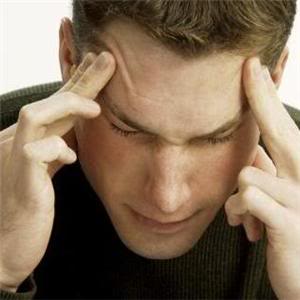Headaches
 Headaches are one of the most common afflictions in life, with up to 90% of people reported to have suffered from headaches at some point in their lives.
Headaches are one of the most common afflictions in life, with up to 90% of people reported to have suffered from headaches at some point in their lives.
Most headaches, other than being painful and bothersome, do not signify anything more serious. However, some types of headaches are signals of more serious conditions and require immediate medical attention.
A large community based study of headaches in Singapore (Ho KH, Ong BK. A community based study of headache diagnosis and prevalence in Singapore. Cephalalgia 2003 Feb;23(1):6-13) found that the overall lifetime prevalence of headaches in Singapore was 82.7%, and this did not vary between racial groups. The types of headaches were classified into: migraines (9.3%), episodic tension type headaches (39.9%), chronic tension type headaches (2.4%) and unclassified headaches (31.2%).
PATHOPHYSIOLOGY
As the brain itself does not have any pain receptors, the pain in headache is actually from several structures in the head and neck region. These include the scalp and neck muscles, meninges (brain lining), extra-cranial arteries, large veins, cranial and spinal nerves. Pain from sinuses, eyes and temporomandibular joint can also radiate to the head to cause headaches.
TYPES OF HEADACHES
Primary Headaches
Secondary Headaches
Secondary headaches are the symptom of an underlying condition and it is thus important for them to be recognized and not dismissed. Conditions which may cause secondary headaches include infections of the brain and meninges (lining of the brain), strokes, tumours, bleeding in the brain from some form of trauma, sleep apnoea , very high blood pressure , acute glaucoma and rhino-sinusitis.
"RED FLAG" SYMPTOMS ... which suggest a Secondary Cause.
You should seek immediate medical attention if you notice any of the following:
• Sudden, severe headache in someone previously headache-free.
• If you experience the "worst headache in your life"
• Sudden, severe headache in someone with hypertension, heart disease or kidney disease.
• Severe headache following a head injury, especially, if associated with vomiting, blurred vision, muscle weakness or drowsiness.
• Any headache accompanied by seizures (fits).
• Headache accompanied by fever (unless there are obvious reasons for the fever, such as a flu)
• Any headache accompanied by a decline in level of consciousness
Possible causes of Secondary Headaches:
• Intracranial bleeding (epidural, subdural, intracerebral hemorrhage)
• Subarachnoid hemorrhage
• Giant cell arteritis
• Cerebral venous thrombosis
• Intracranial hypertension from whatever cause
• Intracranial tumours
• Meningitis
• Encephalitis
• Severe hypertension
• Low cerebrospinal fluid pressure (eg. following a lumbar puncture)
• Rhinosinusitis
• Acute glaucoma
DIAGNOSIS OF HEADACHES
Your doctor will make an assessment of your headache by conducting a clinical interview, followed by a thorough neurological examination. If there are symptoms or physical signs suggestive of a more serious secondary cause, your doctor may recommend a referral to a neurologist or the Emergency Department.
Certain investigations are sometimes performed in the investigation of headaches. These would include:
• A Blood Count:
This would help in the diagnosis of infections.
• Neuroimaging (such as CT scan or MRI):
These imaging investigations help in the diagnosis of intra-cranial pathologies, such as a blood clot, tumour, arteriovenous malformation, hydrocephalus etc.
• Lumbar Puncture:
A sample of cerebro-spinal fluid is obtained from a needle inserted in the lower spine region. This fluid is sent for testing to help with the diagnosis of conditions such as meningitis.
MANAGEMENT OF HEADACHES
PRIMARY HEADACHES
Most primary headaches respond to simple measures.
Pain-killers
Pain killers such as paracetamol and NSAIDS (non-steriodal anti-inflammatory drugs) are often sufficient to control most headaches. For migraine and cluster headaches, specific medication such as ergotamine and triptans may be used.
Sleep
Having insufficient good quality sleep can contribute to headaches. Make sure that you get a good night's rest to enjoy more headache-free days.
Cold Therapy
An ice pack or cold pack placed over the painful area during an acute headache attack, can temporarily provide some relief by numbing the soreness and reducing tension.
Adequate Rest and Reduction of Anxiety
Tension and migraine type headaches are often precipitated by stress. Stress management methods, exercise, meditation and other relaxation techniques, can all help reduce and possibly prevent such headaches.
Healthy Eye Care
Eye strain from prolonged reading or computer work can trigger headaches. Ensure that you have properly prescribed glasses to correct for any vision problems, as short or long sightedness can aggravate eye strain.
SECONDARY HEADACHES
Management of secondary headaches would involve treatment of the underlying cause. For instance, in treating bacterial meningitis, antibiotics will have to be given to treat the underlying infection.
Further Reading
The article above is meant to provide general information and does not replace a doctor's consultation.
Please see your doctor for professional advice.

 Tension type headaches are by far the most common type of headaches experienced. They are sometimes also referred to as "stress headaches".
Tension type headaches are by far the most common type of headaches experienced. They are sometimes also referred to as "stress headaches". Cluster headaches occur in "clusters", in that, they have a tendency to occur periodically, with regular bouts (clusters), and separated by spontaneous remissions.
Cluster headaches occur in "clusters", in that, they have a tendency to occur periodically, with regular bouts (clusters), and separated by spontaneous remissions.